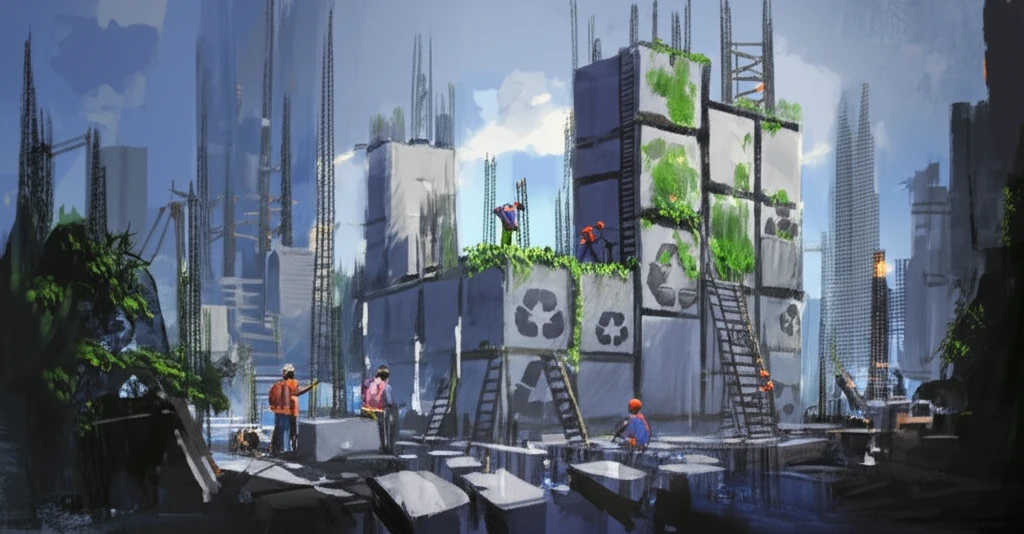
Is Recycled Concrete the Future of Sustainable Construction? What Builders Need to Know
"Exploring the Strength and Sustainability of Recycled Aggregate Concrete in Modern Building Projects"
The construction industry's insatiable appetite for natural resources has dramatically increased over the last century. Factors such as rapid population growth, post-war reconstruction, and the need to replace aging infrastructure have placed immense pressure on resource availability and landfill capacity. This surge in demand has brought sustainability to the forefront of industry concerns.
Recycling construction and demolition (C&D) waste offers a promising solution by reducing the demand for virgin materials and alleviating landfill burdens. Concrete, the most substantial component of C&D waste, presents a significant opportunity for recycling. By using recycled concrete as coarse aggregates (RCA) in new construction, we can potentially reduce environmental impact without sacrificing structural integrity.
However, the use of RCA faces hurdles, including a lack of standardized guidelines and lingering skepticism among practitioners about its short- and long-term effects on structural performance. This article bridges this gap by exploring the findings of recent research on the shear strength of reinforced concrete beams made with RCA, providing insights into its viability for sustainable construction.
Deciphering Recycled Aggregate Concrete (RCA): Understanding the Science

Recycled concrete aggregates are derived from crushed waste concrete. This waste typically comes from the demolition of residential houses and smaller buildings. These buildings often used limestone as a coarse aggregate and mixed the concrete on-site with relatively high water-to-cement ratios because it wasn't super critical. This makes it a good option.
- Water Absorption: RCA tends to have higher water absorption rates compared to NCA, requiring careful mix design considerations.
- Strength & Durability: The strength and durability of RCA-based concrete can vary depending on the source and processing methods used.
- Composition: RCA may contain impurities and variations in composition, which need to be carefully controlled to ensure consistent performance.
The Path Forward: Embracing Sustainable Building with Recycled Concrete
The construction industry is at a turning point. It is imperative to prioritize sustainability to mitigate environmental impacts. Recycled aggregate concrete represents a viable solution. It reduces reliance on natural resources and minimizes waste. By embracing RCA, we can pave the way for a more sustainable and resilient future for the construction industry.
